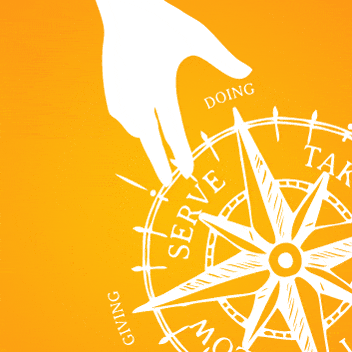
How to get better at giving
Are you someone who spends a lot of your time giving?
If so, I’m guessing you’ve probably felt resentful about that at some point, or ended up feeling burned out by it!
It can be helpful to take a look at why you give – are you truly giving for the other person, or as a way to try and meet your own needs?
Many people give as a way of avoiding the vulnerability of asking to receive what they truly want – if you recognise yourself in that check out this article on how to get better at receiving.
Do you wish you could get better at giving?
There’s plenty of evidence that giving is good for your wellbeing.
But it doesn’t always feel that way, particularly if you’re giving more than you have capacity for, or your limits are being pushed, or overstepped, by others.
Where the Wheel Of Consent can be supportive is by helping you understand what’s involved in giving as well as how to get better at it.
The Wheel helps separate the component parts of giving and receiving into 4 distinct quadrants, so that you can begin to feel how each is different from the other.
Each quadrant has its own challenges, and each has a particular gift. Each comes with a responsibility, and each has a way it can liberate you.
There are 2 ways you can give
Let’s take a look at some of the core essences of giving when you’re with another person, and what to look out for when you’re building skills to get better at giving…
There are two ways you can give:
- One way to give is to take action for someone else’s benefit (known in the Wheel Of Consent as the Serving quadrant);
- The other way you can give is by allowing another person to have access to you in some way (perhaps to your time, your attention, or your body) for their benefit (known as the Allowing quadrant).
Either way, the important thing is that you’re putting aside your immediate wants for a moment; and – crucially – that what happens is something that you’re willing for.
The Art of Serving:
The essence of Serving is Generosity: give with full heart without needing anything in return. Create spaciousness, make it easy for the other to ask for what they really want, and to change their mind.
- Set aside what you prefer – Serving is for someone else’s benefit
- Do only what’s been requested (this makes you trustworthy)
- Stay responsible for your limits
- The more you honour and speak up for your limits the more relaxed and generous you can become
The Art of Allowing:
The essence of Allowing is Surrender: to experience yourself as a gift, knowing you are enough of a gift just by being yourself without the need to ‘do’ anything.
- Set aside what you prefer – Allowing is for someone else’s benefit
- Stay responsible for your limits
- The more you honour and speak up for your limits the more relaxation, joy and freedom you can experience when you give the gift of yourself
Your willingness is an essential part of giving
Whether you’re giving by serving, or giving by allowing, it’s really important that you’re doing it with willingness.
Your willingness might vary in how it looks and feels depending on all sorts of things (learn about the willingness scale) but if you notice that you feel like you’re enduring, going along, or putting up with what’s happening, or feeling resentful, you’re probably no longer truly willing!
If you want some really simple language to use to help you create better experiences of receiving check out the 6 words you need for consent.
And you can work with me to learn and practice skills to help you Enjoy Better Boundaries more easily.
The quadrants
Each quadrant in the Wheel Of Consent creates a different experience and teaches you something different about yourself. Learn more about each one:
Enjoyed reading this?
If you've found this page helpful you can get more tips and resources for better relating straight to your inbox. Sign up here and get my free How To Be Heard guide to start you off:
Explore more:
A simple approach to consent and boundaries
If you feel overwhelmed by the idea of consent and boundaries here are some simple things to focus on which will make it easier to understand.
Read MoreWhy are we so scared of talking in the bedroom?
Talking in the bedroom is often viewed as ‘dirty’ or avoided completely. Find out why it’s time to change that narrative.
Read MoreGiving and receiving explained – 6 key ways to tell the difference
If you think giving and receiving don’t need to be explained you might be surprised by this handy guide that breaks down the differences
Read MoreEvents & courses
Learn To Touch – Supported Self Study Course
Online. Discover a whole new approach to touch that will change how you feel – literally! A short, affordable, practical guide you can learn in less than an hour a day.
Read More







